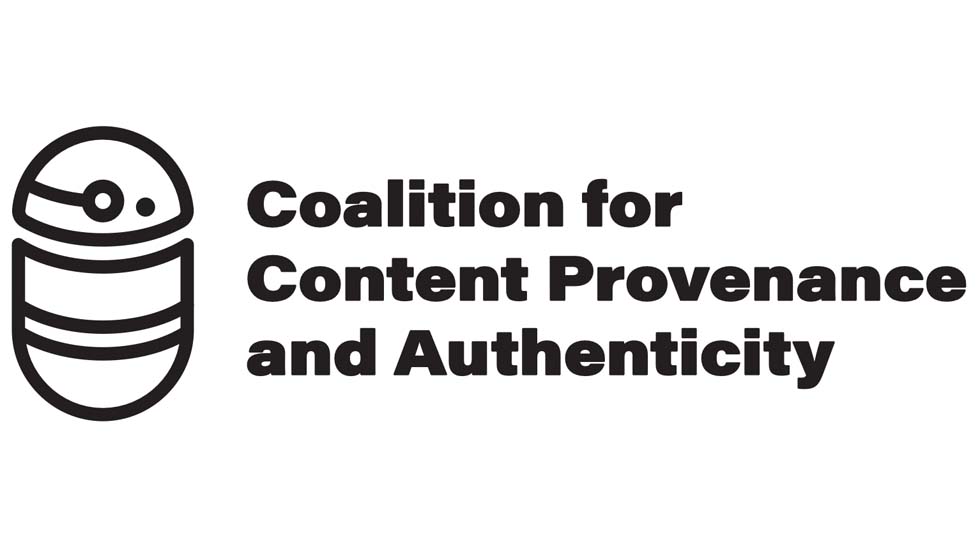The Battle to Protect Broadcast Content From AI Has Just Begun
Industry’s attempts to stem the tide of illegal activity are slowed by congressional inaction

As the malevolent siege against broadcasters’ interests intensifies from the far reaches of artificial intelligence misuse to relentless innovation in the multibillion-dollar piracy business, the overarching question is whether the industry can muster resistance on a scale conducive to success.
So far, there’s much to applaud on the anti-piracy side of the battle. When it comes to thwarting the destructive use of AI, though, the pace of remedial action is lagging well behind the growing threat, despite the din of alarms sounding from all corners of the marketplace and a plethora of federal and state legislative initiatives.
“The rise of large-scale content scraping by AI systems and digital platforms poses a serious threat to the sustainability of local journalism,” Alex Siciliano, senior vice president of communications at the National Association of Broadcasters, said. “These systems use broadcasters’ reporting to train or populate AI products without authorization, compensation or attribution—diverting revenue away from local stations that invest heavily in producing trusted news, sports and emergency coverage.”
Whether Washington has the will to do anything about this set of AI issues remains to be seen. The latest addition to the stack of pending Senate bills—the AI Accountability and Personal Data Protection Act, introduced in late July—awaits any sign that it will garner consideration.
On another track, the Content Origin Protection and Integrity from Edited and Deepfaked Media (COPIED) Act, which stalled in the Senate last year, has been reintroduced with full support from NAB to create barriers to use of deepfakes and unauthorized use of content to train AI models. Another of those NAB-supported efforts from 2024, the NO FAKES Act, was reintroduced this year with broad bipartisan support in the House and Senate. That measure takes a complementary approach toward, as NAB puts it, “protecting trusted broadcast journalists, local radio hosts and other on-air personalities from the unauthorized use of their voice, image or likeness.”
Obviously, moving all these different measures to passage, possibly with efforts to consolidate them at some point, will take a good deal of time. And there’s no telling what will be done to deal with the regulatory chaos stemming from state-level initiatives, which to date have produced over 1,000 bills targeting AI regulation of some kind, according to the security regulations tracker Lawfare.
‘Scary Good’ AI Apps
Meanwhile, just how far ahead of the law-making curve Big Tech support for mass acculturation to AI hyperrealism has gone is seen in the success of OpenAI’s Sora app, dubbed “scary good” in a New York Times headline for its ability to act as a TikTok-like social media engine for sharing AI-generated videos. In fact, as TV Tech reported in July, there’s even some experimentation with AI fakery on the part of station groups that want to bolster the reach of their newscasts by taking advantage of its ability to distort reality by turning monolinguistic on-air personalities into fluent multilinguists.
The professional video industry's #1 source for news, trends and product and tech information. Sign up below.

Such steps, taken with public notification of AI usage, are a response to pressures arising from the need to build broadcast news viewership in the digital domain. While TV news still serves vast audiences, “it doesn’t have the relevance, the scale and necessarily the best business model when it gets into the digital space,” said Michael Newman, director of transformation for Graham Media Group’s digital operations. At this point, Newman said, using AI in on-air newscasting is a bridge too far, though he acknowledged is use to support live translation in newscasts is “really cool and a great example of how AI and original reporting can be accessed by more people.”
Even though broadcasters welcome some controls—as reflected in the NAB’s support for legislation like the COPIED Act—the way forward is complicated by inevitable disputes over how to rein AI in. “We are also engaged with policymakers and industry partners to ensure any new regulations or voluntary standards maintain a balance between protecting creative rights and allowing legitimate innovation,” Siciliano said.
Inevitably, as the slow grind unfolds in Congress and at the Federal Communications Commission—which, at press time, was scheduled to vote in late October on a Biden-era notice of proposed rulemaking governing disclosure of AI usage in political ads opposed by Chair Brendan Carr as well as the NAB—it remains up to stations to set up protective procedures against AI misuse by outsiders as well as parameters defining limits on internal usage. To many in an industry where attitudes about regulation are mixed, this isn’t necessarily a reprehensible situation.

At Fox Television Stations, “the approach overall is that this is an area of growth that’s happening that we need to understand and be involved in,” said Jeff Zellmer, the group’s executive vice president of digital operations. “It’s better to find partners that help us use it well than to throw up walls.”
Added Sinclair Chief Innovation Officer Scott Ehrlich, “Moving responsibly falls to companies like ours.” As for industry-wide agreement on such things, “it’s hard to standardize when you’re dealing with a target moving as fast as AI,” he said.
Piracy Concerns, Too
Nonetheless, while the industry hasn’t formalized standards around AI usage, Ehrlich voiced hope for organizations moving the industry toward more generalized protection that encompasses piracy as well as AI. One group he cited is the Coalition for Content Provenance and Authenticity (C2PA), an ad hoc group working to systematize ways to establish content provenance and address misinformation.
Indeed, it’s in this realm of tools engineered to “help broadcasters verify the origin of their content, signal to viewers that programming is genuine and trace misuse when it occurs,” as described by Siciliano, that progress on the anti-piracy front offers a hopeful counterpoint to the slog on the AI side. Broadcasters are “collaborating with technology partners to strengthen the resilience of their distribution systems and guard against unauthorized access or signal manipulation,” he noted.

At this point in time, piracy is far more damaging to bottom lines across the TV broadcasting and streaming ecosystem than AI. “Video piracy is the third largest category in organized crime behind drugs and sex trafficking,” said Robin Boldon, head of product at Friend MTS, a leading supplier of forensic fingerprinting and watermarking tools used, respectively, to find stolen content in the global stream flow and identify its sources.
A 2024 survey conducted by streaming service tracker cordcutting.com found that one in three U.S. adults admitted to pirating TV shows or movies within the past year. According to research reported by the Kearney consulting group, the U.S. ranks first in national tabulations of visits to pirate websites. Globally, the number of visits to such sites rose by 13% from 125 billion in 2019 to 141 billion in 2023, Kearney said. Parks Associates has predicted U.S.-based content suppliers will lose $113 billion to piracy in this country alone by 2027.
Big Anti-Piracy Advances
It’s clear that a new generation of advanced anti-piracy tools and services is making life harder than ever for thieves. Silent Push, operator of an advanced piracy scanning and aggregation engine, recently reported uncovering an IPTV piracy network impacting more than 20 global media brands through operations involving over 10,000 IP addresses identifying servers and computers associated with about 1,000 websites.
Friend MTS has expanded its support for fighting piracy on several fronts. In response to the recent surge in so-called CDN leeching involving injection of purloined digital rights management keys, the company launched its server-side “Distribution Watermarking” solution to identify hacked subscriptions restreamed by pirates. This complements the widely deployed FMTS client-side Subscriber Watermarking solution that disrupts a live stream within a few minutes of start time, which is essential to causing meaningful pain to viewers of illicit sports feeds.

Most recently, FMTS upgraded its piracy monitoring service with use of an AI Retrieval-Augmented Generation (RAG) model that continuously learns and adapts to pirates’ evolving tactics. It also launched fully staffed Piracy Investigation Services, which put regional teams to work using FMTS tools in ways that combine threat intelligence, identification and enforcement in accord with local practices.
“Along with supporting traditional methods like sending notices and building the chains of evidence required by courts, we’re going many steps further with service layers offering investigations and enforcement assistance, depending on what customers want,” Friend’s Boldon said.
Shift in Attitude
Another adjustment to the current state of affairs comes from Nagravision, a longtime leader in traditional conditional access, multi-DRM protection, watermarking solutions and on-the-ground teamwork with local law enforcement and regional organizations. The company has introduced a new approach to shaping anti-piracy strategies with a business-first perspective on what customers need, said Tim Pearson, vice president of global solutions and partner marketing.
In a market characterized by the diversity of issues associated with the transition to streaming, “we’re seeing buyers coming with very purposed agendas,” Pearson noted. “They have a problem, and they want to fix it.” He said the company is putting AI to work perusing “massive amounts of analytics and insights into data platforms” to find “pattern matches that allow us to really understand consumer behavior,” such as discerning how service price deductions can produce net ROI gains by reducing reliance on pirate services.

Nagravision is also teaming with Broadpeak to strengthen the battle against CDN leeching in use cases involving live sports. With AI abetting analytics, the solution can monitor DRM license requests to detect suspicious activity patterns and speed the disruption of illicit streams, Damien Sterkers, vice president of products and solutions marketing at Broadpeak, said. “On top of the video intelligence layer, we have human services with people working 24/7 to inform content owners what’s happening,” he said.
Underlying the effectiveness of all this activity is a big shift in content owners’ attitudes about piracy. “When piracy was detected, it used to be seen as the rights holder’s problem,” Boldon said. “Now it’s understood that it’s everybody’s problem.”
When piracy was detected, it used to be seen as the rights holder’s problem. Now it’s understood that it’s everybody’s problem.”
Robin Boldon, Friend MTS
A case in point is growing participation in the International Broadcaster Coalition Against Piracy (IBCAP), which has expanded to include international and U.S. content owners, broadcasters and distributors representing more than 220 television channels. IBCAP said it has instigated a surge of lawsuits running into the tens of millions of dollars against wrongdoers in the U.S. and abroad, along with real-time takedowns of illicit live sports streams, including disruptions of more than 6,000 streams reaching millions of viewers during the 2024 Indian Premier League cricket tournament.
Whether cooperation in battling the misuse of AI can get to this level remains to be seen.
Fred Dawson, principal of the consulting firm Dawson Communications, has headed ventures tracking the technologies and trends shaping the evolution of electronic media and communications for over three decades. Prior to moving to full-time pursuit of his consulting business, Dawson served as CEO and editor of ScreenPlays Magazine, the trade publication he founded and ran from 2005 until it ceased publishing in 2021. At various points in his career he also served as vice president of editorial at Virgo Publishing, editorial director at Cahners, editor of Cablevision Magazine, and publisher of premium executive newsletters, including the Cable-Telco Report, the DBS Report, and Broadband Commerce & Technology.

